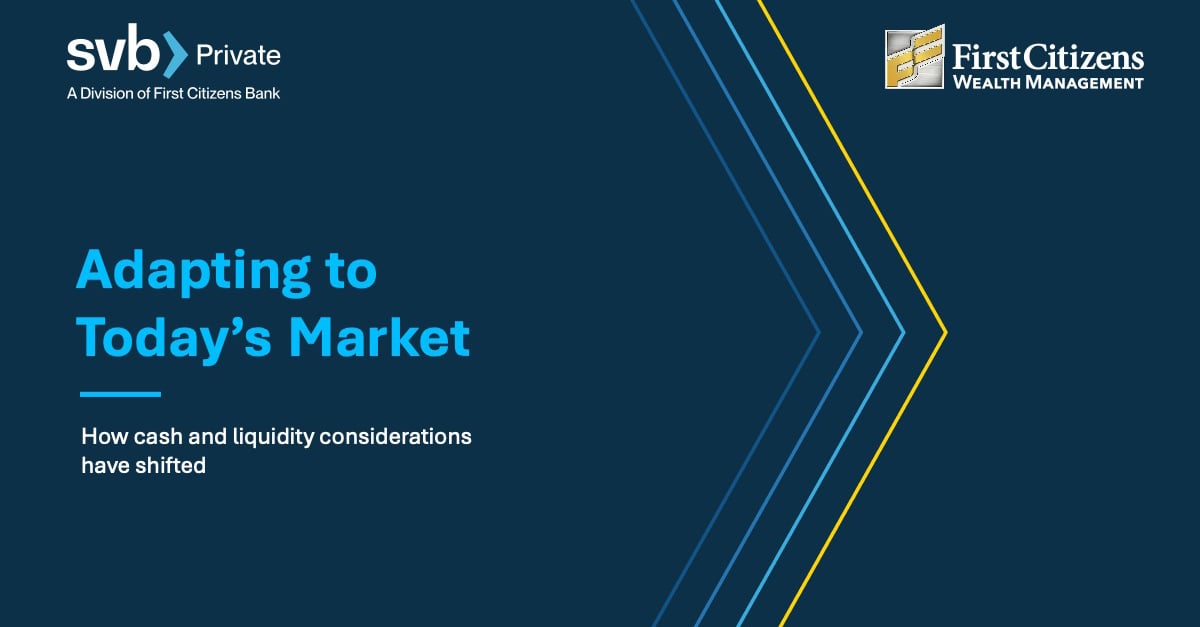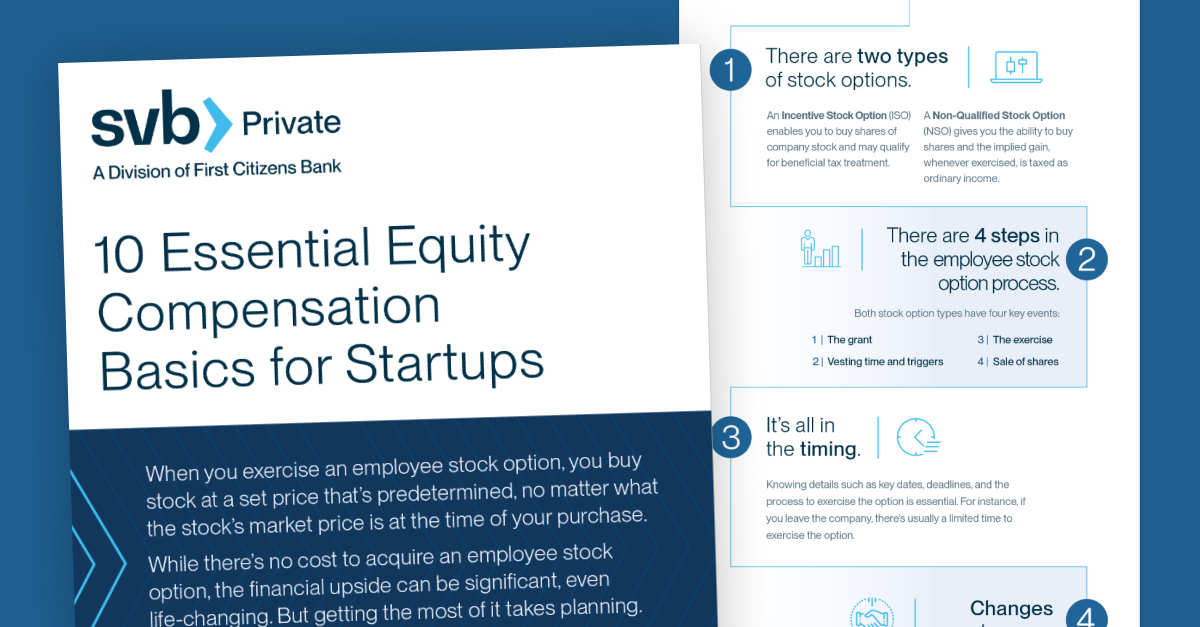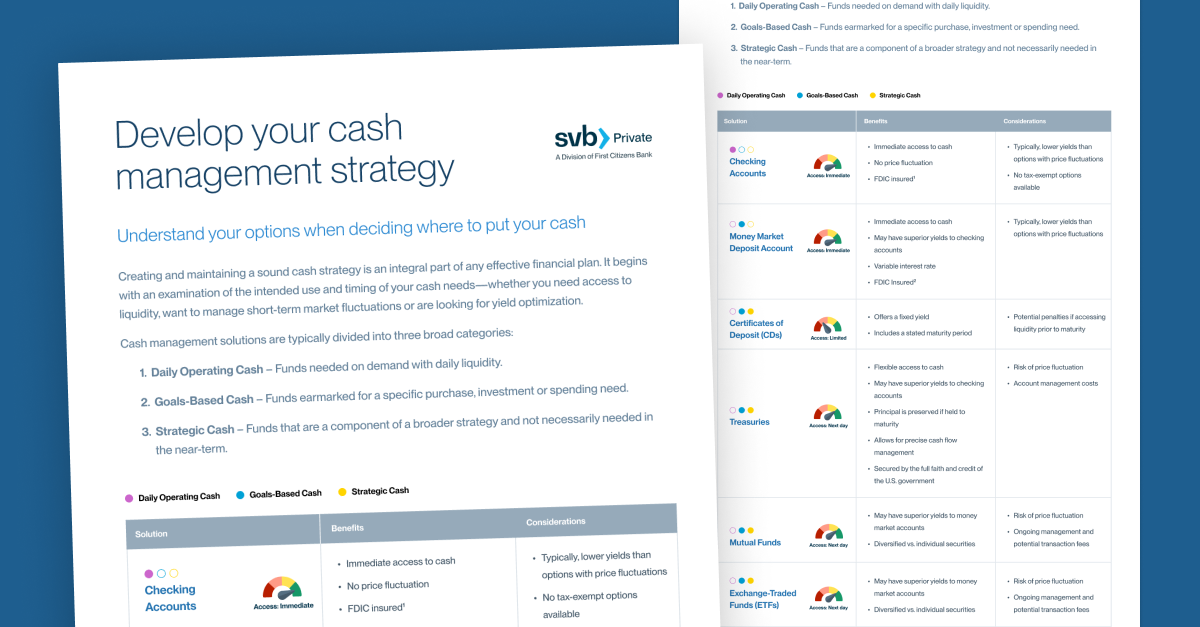Every day, we are asked by founders “How can I gain liquidity from my shares?” Generally, these individuals are looking for a loan against their private holdings, and we help them to determine which liquidity options would work best for them.
This article explores some of the many ways that a founder can get the liquidity they need and continue to build their business for the long term.
1. Loan from the company
Often an overlooked avenue, the company may be able to provide a loan to an executive at very reasonable rates.
Important things to note:
- This will be reflected on the company’s balance sheet, which would need to be cleaned from the balance sheet prior to filing of an S-1.
- The executive could realize nominal carrying costs of the loan and potentially capitalize interest into the loan balance.
- The loan must be a full recourse loan.
Important risk considerations:
- Depending on when the executive has the ability to sell shares via a liquidity event, the shares are subject to market risk. In some instances, executives are able to negotiate with the Board, investors and underwriters to sell shares into the offering in an amount equivalent to cover the loan obligation and any taxes associated with the gain. If this is not available, then the executive would be prevented from selling the shares until after the lockup expires (and the company would want to make sure that the executives’ 10b5-1 plans are designed with this in mind).
- Under this approach, the company would either pay a bonus to the executive or forgive the balance of the note, and, in the case of a success bonus, potentially could have a clawback if the executive leaves before a certain period.
2. Company share repurchase/potential future grant
This is where a company would repurchase shares valued at the current fair market value of its common stock or in the case of a round raise, at a pre-determined price.
Important things to note:
- May be done as part of an equity round or as a one-off transaction.
- The share repurchase would be treated as sale of stock for tax purposes, and the executive would pay capital gains on the realized gain (there could be an element of ordinary income if the price paid is in excess of the 409(a) value).
- Shares repurchased by the company are not eligible for the QSBS exclusion and if the repurchase is large (generally greater than 5% of outstanding shares), may impact other shareholders’ eligibility for QSBS on their share acquired from the company.
- Any new equity grant could provide further retention if vesting conditions are attached.
3. Direct Or secondary sale (to institutional investors or secondary investors)
Direct sale of a portion of the executive’s common shares to an existing or new investor is another option.
Important things to note:
- May be in conjunction with a secondary round---typically an investor will purchase common shares at a discount to the preferred round price, but at a premium to the 409(a) price.
- A sale to an existing investor could have 409(a) implications that should be considered.
With a secondary sale to a one-off investor, founders would need to consider:
- Limitations and restrictions related to company's right of first refusal (ROFR) and other limitations on transfers often apply. Ultimately, the company needs to consent to any sale, transfer or pledge of company stock.
4. Loan from third-party
These can be difficult to lock in; however, the owner retains equity ownership interest, voting rights, and can benefit from any potential appreciation in the stock and the loan is not reflected on the company’s balance sheet. This method is frequently used to purchase options to begin the holding period for long-term capital gains.
Important things to note:
- Non-recourse loan using the shares as collateral.
- Typically for companies with an imminent exit (e.g., filed S-1, Merger Agreement) and sufficient collateral coverage to support the loan.
- Some specialty funds will loan earlier in the life cycle and take an equity piece in addition to the loan interest and fees.
- Personal recourse loan is suitable for companies with an imminent exit (e.g., filed S-1, Merger Agreement) and sufficient collateral coverage to support the loan.
-
- Without signals of a near-term exit, this option is challenging to achieve.
- Requires the ability to service the debt in the absence of an imminent exit.
Loan with enhancement:
- Occasionally, there are opportunities for loan enhancements which make this option more likely. Some existing or new investors may agree to guarantee the loan or participate in a put option. Investors agree to purchase the shares at an agreed upon price at a future date which can allow for ownership retention, more potential upside, and holding/tax advantage in the case of option exercise.
Final thoughts
It’s important to think through the impact of these options for you personally and your business. The natural follow-up question founders ask us after asking “How can I gain liquidity from my shares?” is “How much liquidity should I access?” The answer is specific to each situation. Sometimes the answer lies within other questions like, “How much cash do I need to exercise options?” or “How much do I need for the down payment on a home?” If a founder is seeking to repay existing debt, diversify their balance sheet, or simply relieve the financial pressure valve, this question becomes more personal. Perhaps trading a small percentage of future equity for cash today is worth forfeiting future upside.
Investors, in general, want founders to retain ample equity ownership in the company while it grows, but are considerate of some appropriate financial planning. What is ample and appropriate is rightly debated at the executive and board levels of many venture-backed companies, with the focus on creating as much shareholder value as possible.
We welcome a conversation around these paths to liquidity and other ways SVB Private and qualified third-party tax advisors can be supportive to achieve your financial goals.














